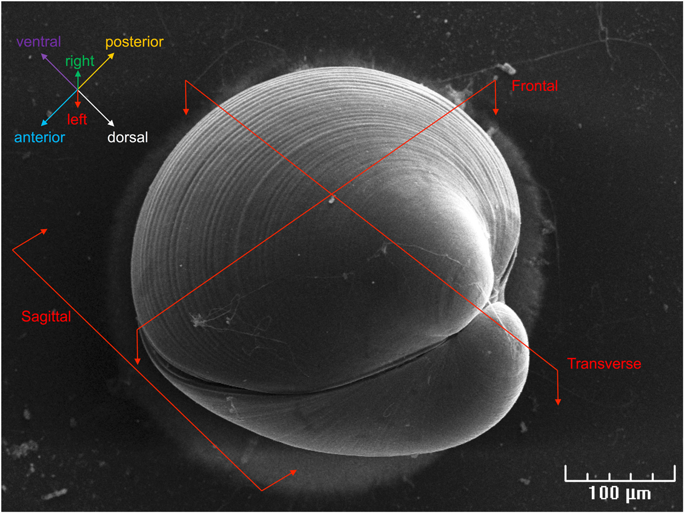Our official English website, www.x-mol.net, welcomes your
feedback! (Note: you will need to create a separate account there.)
Proteinaceous secretion of bioadhesive produced during crawling and settlement of Crassostrea gigas larvae.
Scientific Reports ( IF 3.8 ) Pub Date : 2018-Oct-17 , DOI: 10.1038/s41598-018-33720-4 Valentin Foulon , Sébastien Artigaud , Manon Buscaglia , Benoit Bernay , Caroline Fabioux , Bruno Petton , Philippe Elies , Kada Boukerma , Claire Hellio , Fabienne Guérard , Pierre Boudry
Scientific Reports ( IF 3.8 ) Pub Date : 2018-Oct-17 , DOI: 10.1038/s41598-018-33720-4 Valentin Foulon , Sébastien Artigaud , Manon Buscaglia , Benoit Bernay , Caroline Fabioux , Bruno Petton , Philippe Elies , Kada Boukerma , Claire Hellio , Fabienne Guérard , Pierre Boudry

|
Bioadhesion of marine organisms has been intensively studied over the last decade because of their ability to attach in various wet environmental conditions and the potential this offers for biotechnology applications. Many marine mollusc species are characterized by a two-phase life history: pelagic larvae settle prior to metamorphosis to a benthic stage. The oyster Crassostrea gigas has been extensively studied for its economic and ecological importance. However, the bioadhesive produced by ready to settle larvae of this species has been little studied. The pediveliger stage of oysters is characterized by the genesis of a specific organ essential for adhesion, the foot. Our scanning electron microscopy and histology analysis revealed that in C. gigas the adhesive is produced by several foot glands. This adhesive is composed of numerous fibres of differing structure, suggesting differences in chemical composition and function. Fourier transformed infrared spectroscopy indicated a mainly proteinaceous composition. Proteomic analysis of footprints was able to identify 42 proteins, among which, one uncharacterized protein was selected on the basis of its pediveliger transcriptome specificity and then located by mRNA in situ hybridization, revealing its potential role during substrate exploration before oyster larva settlement.
中文翻译:

Crassostrea gigas幼虫爬行和沉降过程中产生的生物粘合剂的蛋白质分泌。
在过去的十年中,由于海洋生物附着在各种潮湿环境中的能力以及其为生物技术应用提供的潜力,因此对海洋生物的生物附着力进行了深入研究。许多海洋软体动物的生活史分为两阶段:浮游幼虫先于变态进入底栖阶段才定居。牡蛎Crassostrea gigas因其经济和生态重要性而被广泛研究。然而,几乎没有研究过由该物种的幼虫沉降产生的生物粘合剂。牡蛎的定居阶段的特征是对脚的附着必不可少的特定器官的起源。我们的扫描电子显微镜和组织学分析表明,在C. gigas中,胶粘剂是由几个脚腺产生的。这种胶粘剂由许多结构不同的纤维组成,表明化学成分和功能不同。傅里叶变换红外光谱表明主要是蛋白质组成。脚印的蛋白质组学分析能够鉴定出42种蛋白质,其中,根据其定性转录组的特异性选择了一种未表征的蛋白质,然后通过mRNA原位杂交进行定位,揭示了其在牡蛎幼虫沉降之前的底物探索中的潜在作用。
更新日期:2018-10-17
中文翻译:

Crassostrea gigas幼虫爬行和沉降过程中产生的生物粘合剂的蛋白质分泌。
在过去的十年中,由于海洋生物附着在各种潮湿环境中的能力以及其为生物技术应用提供的潜力,因此对海洋生物的生物附着力进行了深入研究。许多海洋软体动物的生活史分为两阶段:浮游幼虫先于变态进入底栖阶段才定居。牡蛎Crassostrea gigas因其经济和生态重要性而被广泛研究。然而,几乎没有研究过由该物种的幼虫沉降产生的生物粘合剂。牡蛎的定居阶段的特征是对脚的附着必不可少的特定器官的起源。我们的扫描电子显微镜和组织学分析表明,在C. gigas中,胶粘剂是由几个脚腺产生的。这种胶粘剂由许多结构不同的纤维组成,表明化学成分和功能不同。傅里叶变换红外光谱表明主要是蛋白质组成。脚印的蛋白质组学分析能够鉴定出42种蛋白质,其中,根据其定性转录组的特异性选择了一种未表征的蛋白质,然后通过mRNA原位杂交进行定位,揭示了其在牡蛎幼虫沉降之前的底物探索中的潜在作用。











































 京公网安备 11010802027423号
京公网安备 11010802027423号